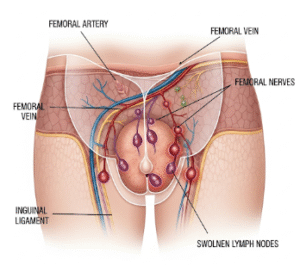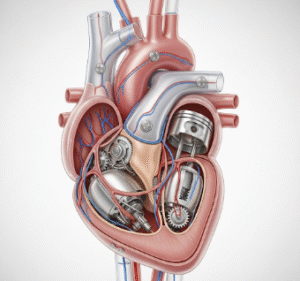➤ What it is
Patch testing for allergens is a diagnostic procedure used to identify substances that cause allergic contact dermatitis (ACD). It is considered the gold standard for diagnosing delayed-type (Type IV) hypersensitivity reactions.
Unlike immediate allergies (e.g., food, pollen), allergic contact dermatitis occurs hours to days after exposure to an allergen. Patch testing helps uncover hidden triggers, especially in patients with chronic or recurrent dermatitis.
In Korea, patch testing is widely used in dermatology clinics to evaluate cosmetic-related allergens, occupational triggers, and everyday exposures, reflecting the country’s strong skincare culture and advanced dermatological standards.
➤ Why it’s done
Patch testing is essential because:
- Identifies specific allergens → nickel, fragrances, preservatives, dyes, and cosmetic ingredients.
- Guides avoidance strategies → patients learn what products to stop using.
- Prevents recurrence → reducing exposure leads to long-term control.
- Differentiates causes → helps distinguish between allergic vs. irritant contact dermatitis.
- Korean dermatology focus → since Koreans use multi-step skincare routines and cosmetics daily, patch testing is especially relevant for identifying cosmetic-related allergies.
➤ Alternatives
Although patch testing is the gold standard, other options may complement it:
Clinical Alternatives
- Repeat Open Application Test (ROAT) → patient applies product to same skin area daily to observe reaction.
- Prick Testing → useful for immediate allergies (not for contact dermatitis).
- Blood tests (ImmunoCAP, RAST) → detect IgE antibodies; less effective for contact dermatitis.
Korean Dermatology Enhancements
- Customized allergen panels → include cosmetic preservatives, fragrances, sunscreen filters, and whitening agents.
- Digital skin analysis → AI-based monitoring of reactions for greater accuracy.
- Product-specific testing → patients bring their own skincare or makeup items for evaluation.
➤ Preparation
Proper preparation ensures valid results:
- Pre-Test Guidelines
- Stop topical steroids or immunosuppressive creams on the test area 1–2 weeks before.
- Avoid tanning or sunburn on the back.
- Do not apply creams, oils, or lotions on test site before testing.
- Medical History
- Dermatologists collect detailed history of symptoms, skincare routine, cosmetics, occupational exposures, and lifestyle factors.
- Korean clinics often emphasize cosmetic usage patterns, including toners, serums, sunscreens, and makeup.
- Patient Education
- Patients are informed to avoid exercise, swimming, and sweating during the test period.
- Instructions provided about possible mild irritation.
➤ How it’s Done
Patch testing allergens in Korea is a systematic process involving several steps:
1. Allergen Selection
- Standard panels → metals, fragrances, preservatives, dyes.
- Cosmetic panels → parabens, formaldehyde releasers, fragrance mix, sunscreen filters, whitening agents.
- Occupational panels → hair dye chemicals, rubber additives, cleaning agents.
- Patient’s personal skincare/cosmetics also tested.
2. Patch Application
- Small chambers containing allergens applied to upper back using adhesive patches.
- Remain in place for 48 hours.
3. First Reading (48 hours)
- Patches removed.
- Dermatologist checks for redness, swelling, or vesicles.
4. Second Reading (72–96 hours)
- Essential for detecting delayed hypersensitivity reactions.
- Reactions graded according to international scoring systems.
5. Korean Enhancements
- Digital photography and AI software track subtle changes in reactions.
- Customized cosmetic panels widely used, reflecting Korea’s skincare-heavy culture.
- Education sessions post-results, where dermatologists provide safe product lists.
➤ Recovery
Patch testing requires little recovery, but some irritation may occur:
- Mild itching, redness, or swelling at test sites is common.
- Rarely, blisters may form if strong allergy present.
- Symptoms usually resolve within a few days.
Aftercare Instructions:
- Do not scratch or rub test areas.
- Avoid applying ointments unless directed.
- Protect test site from water or friction until results complete.
Korean Recovery Practices:
- Soothing hydrogel masks or creams applied after patch removal.
- LED light therapy sometimes used to calm irritated skin.
- Barrier creams prescribed for patients with very sensitive skin.
➤ Complications
Patch testing is generally safe, but potential issues include:
- Strong allergic reactions at patch site → treated with mild topical steroids.
- False positives (irritation misinterpreted as allergy).
- False negatives if allergen concentration too low or skin suppressed by prior medications.
- Pigmentation changes at test sites (rare).
Korean dermatologists reduce risks by:
- Using standardized allergen concentrations validated for safety.
- Performing multiple readings to increase accuracy.
- Offering follow-up care with barrier creams or soothing facials.
➤ Treatment Options in Korea
Korea has highly advanced patch testing facilities due to the demand for cosmetic safety.
Why Korea excels:
- Cosmetic-focused testing → allergens from K-beauty products included in panels.
- Integration with dermatology and cosmetic science → patients receive safe skincare alternatives.
- Digital AI monitoring → improves diagnostic precision.
- Comprehensive care → post-test counseling, skincare routines, and product substitution advice.
Unique Korean Practices:
- Patient-specific testing → applying patient’s actual skincare or makeup products.
- Educational skincare programs → guidance on hypoallergenic K-beauty routines.
- Medical tourism services → popular among international patients who want to identify cosmetic allergies.
- Combination with patch + ROAT for extra accuracy.
✨ Final Thoughts
Patch Testing Allergens in Korea provides a gold-standard diagnostic approach to identifying triggers of allergic contact dermatitis. By combining international patch testing methods with Korea’s cosmetic-focused allergen panels, digital analysis, and holistic skincare programs, patients receive both accurate diagnoses and practical solutions.
This fusion of science, dermatology, and K-beauty culture makes Korea a global leader in allergen patch testing, helping patients manage dermatitis with clarity, confidence, and healthier skin practices.













